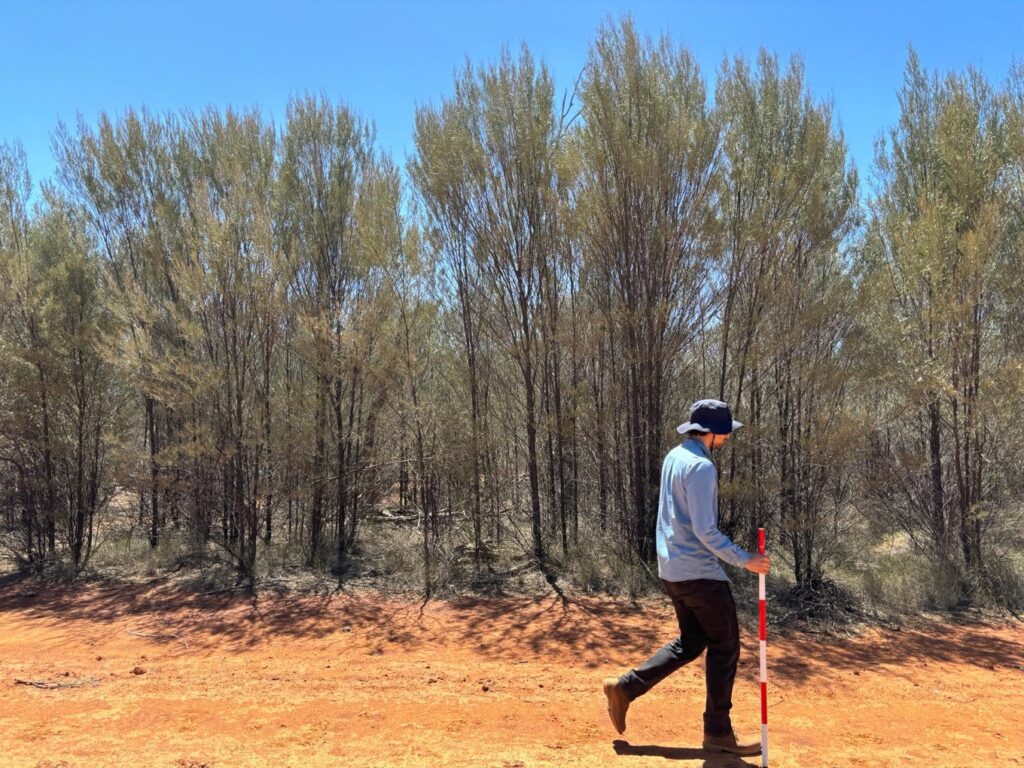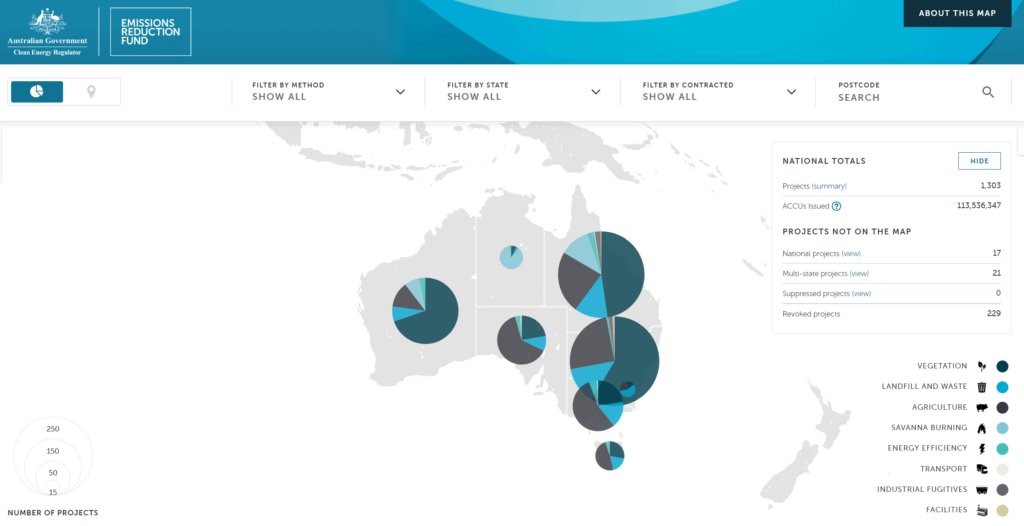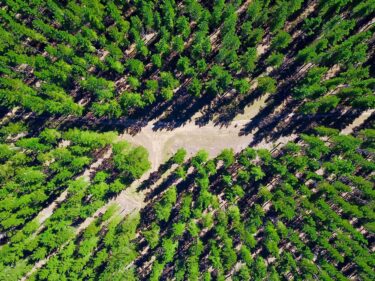Share this article
Carbon farming, carbon credits and carbon offset projects have all become familiar terms, with conversations around climate change and decarbonisation now mainstream. As governments worldwide and in Australia make net zero pledges; climate risk inches higher and higher in the list of top 10 threats to business; ESG strategies and carbon neutral commitments continue to skyrocket; and new carbon offset methods are developed; the opportunity for land managers to consider developing carbon offset projects becomes more appealing and more viable.
But what is carbon farming, who regulates the carbon market, how do you go about developing a self-generating carbon offset project, what type of carbon offset projects are there and how do you sell carbon credits?
Here’s a simple explainer.
What is carbon farming?
Carbon farming is a way of managing the land to decrease carbon from greenhouse (GHG) emissions due to livestock, soil, vegetation loss or even fires (avoidance), or to increase and maintain carbon stored in soil and vegetation such as plant roots, wood and leaves (sequestration).
The goal of carbon farming is to have a higher ratio of carbon sequestered to create a net loss of carbon from the atmosphere.

Image: Anthesis carbon offset project evaluation
What is the Carbon Farming Initiative? (Now the Australian Carbon Credit Unit Scheme)
The Carbon Farming Act was legislated in 2011 by the Australian Government’s Clean Energy Regulator (CER) to establish a voluntary carbon offsets scheme called the Carbon Farming Initiative (CFI).
The objectives were to help Australia meet its international emissions reductions commitments, to promote abatement in a way that would both protect the natural environment and increase resilience from the effects of climate change. It was also used to create a verified platform for the generation of certified carbon offsets for use under the Clean Energy Act 2011 (Cth). At the time it was enacted it was one of the most comprehensive domestic offset schemes in the world.
The scheme allowed land managers to earn carbon credits for storing carbon in the land or by reducing GHG emissions from the land. This was via:
- new technology,
- upgrading equipment,
- changing business practices to improve productivity or energy use, or
- changing the way vegetation is managed to store more carbon.
In 2014 the CFI was integrated into the Emissions Reduction Fund (ERF) which builds on the CFI and over subsequent years has developed new methodologies for carbon offset projects.
More recently, the ERF has transitioned into the Australian Carbon Credit Unit (ACCU) Scheme.
Australian Carbon Credit Units
The carbon credits generated by certified carbon offset projects are called Australian Carbon Credit Units (ACCUs). These carbon credits can be traded to the government, or other businesses wishing to offset their emissions through a carbon abatement contract or on the secondary market. Learn more about carbon offsets.
To create carbon credits or ACCUs, potential developers need to identify and follow an applicable Method under the ERF.
What type of Carbon offset projects (or Methods) are there?
The Clean Energy Regulator is responsible for developing the methodologies (methods) and administering the ERF. These methods must be strictly adhered to and any potential offsets project must ensure it is genuine and additional to business-as-usual operations.
The types of carbon offsets projects and associated emissions avoidance (or sequestration) activities are categorised into the themes listed below. For a full list see the Methods for the Australian Carbon Credit Unit Scheme
- Agriculture: e.g. increasing soil carbon or reducing livestock emissions
- Carbon capture and storage
- Energy efficiency e.g. commercial, industrial and aggregated energy efficiency
- Facilities
- Mining, oil and gas e.g. capture and destruction of coal mine fugitive emissions
- Transport e.g. reductions in emissions-intensity
- Vegetation management e.g. carbon sink plantings, and reforestation
- Waste and wastewater e.g. capture and combustion of landfill gas and agricultural waste
Note new methods are continuously being developed and people can even nominate ideas for the CER to consider for next round of method priorities.
Take a look at the carbon farming projects happening around Australia here.

What to keep in mind if you are thinking about starting a self-generating carbon offset project
Eligibility
One of the first things you must consider when thinking about a carbon farming project is the eligibility of the carbon offsets project. The project must meet the below criteria as stated by the CER and see here for more information.
- be totally new
- go beyond business-as-usual activities
- not be required by law
- not be receiving financial support from specified government programs
- follow an approved method
- not be an excluded activity listed in the Carbon Credits (Carbon Farming Initiative) Regulations 2011
Permanence Obligations
Another key consideration to keep in mind for sequestration projects is permanence periods. Carbon farming sequestration projects must choose a permanence period of either 25 or 100 years. That means the carbon stored by a project must be maintained for the nominated period. A permanence plan must be developed to ensure the project proponent can demonstrate to the CER the actions they have or will take to protect the carbon sequestered and credited by the project for the permanence period.
Land Size
There has been a lot of interest from smaller farmers and landholders interested in developing a carbon farming project. But how much land do you need to earn carbon credits for tree plantings to make it worthwhile? In terms of small land holdings, anything under 200 hectares would be classed on the small side to merit pursuing a reforestation project under the ERF. These projects are timely, costly and complex.
However, there are some additional options recently introduced under the ERF to help encourage and support smaller projects. The Clean Energy Regulator provides some further information on the Environmental Plantings Pilot for smaller projects less than 200 hectares. There may also be an opportunity to aggregate multiple smaller sites into one project. However it’s worth noting there are complications and challenges with this approach.
I think I’m eligible to start a carbon farming project – what is the process?
To guide you through the next steps the CER has some excellent resources that you should explore starting here with the steps to participate.

Additionally, CSIRO also have an excellent interactive tool to help you further understand project opportunities at a specific location: LOOC-C.
The Carbon Market Institute’s Carbon Project Registry showcasing carbon offset projects from around the country, is also a great resource for getting a better understanding of the nature and scope of carbon farming projects that are being undertaken.
You should also have a read of our two part series on self-generating land based carbon offset projects How to Self-Generate Carbon Credits – Building an Offsets Strategy and Land-based Carbon Offsets – from Strategy to Implementation
How to participate in the ACCU Scheme?
If you’re eligible, have decided on your method and want to take it to the next stage you will need to register your project with the CER. We’d recommend getting some expert guidance at this stage. ACCU projects tend to take time, be complex and costly and you want to make sure you have everything in order as best as you possibly can before you register.
You can register a project and start earning ACCUs under the ACCU scheme without securing a contract with the CER at the auction up front. You can do that later – or sell them via the secondary market to organisations wanting to use credits towards their carbon neutral goals. Carbon offset brokers can help facilitate this process.
Need more guidance on carbon offset projects?
We are established carbon market advisors and can provide further guidance on carbon abatement estimates and eligibility due diligence, economic analysis, project implementation and other strategic advisory support.
Reach out to us for advice on building an offsets strategy or eligibility of a property for implementing a carbon project: email or Call +61 3 7035 1740. If you need advice on a wider climate change or sustainability strategy, we can help with that too.





